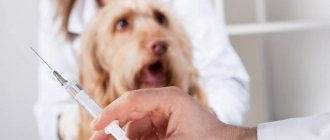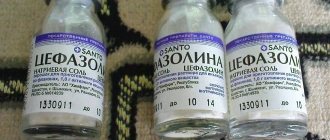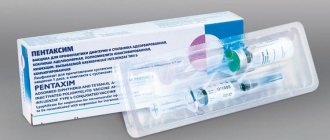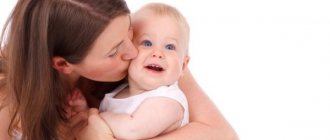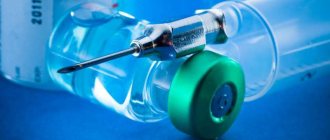How to care for a dog, what conditions will be optimal and how to provide them - these are questions that need to be asked before purchasing a pet. If you have already chosen your baby and are planning to take him home, it makes sense to know when to bathe your puppy for the first time. There are no strict restrictions in this matter, but you should still listen to the recommendations of experienced breeders.
Is it possible to bathe puppies
You can and should bathe your pets. The main thing is not to resort to these actions at too early an age, and avoid excessively frequent bathing.

At what age is swimming allowed?
First of all, you need to figure out how many months you can bathe dogs. It is not recommended to wash an unvaccinated one-month-old puppy.
It is believed that it is better to start procedures when the pet has reached the age of 2 months.
Bathing frequency
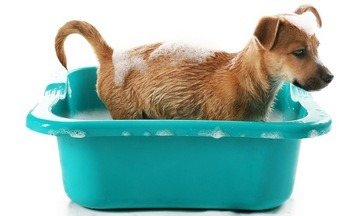
This largely depends on the type of coat, time of year, where the animal is kept and weather conditions. Often these actions are not recommended.
During the washing process, the animal's sebum is removed, which protects it from getting wet in rainy weather.
As a result, the pet becomes more sensitive to unfavorable external factors and is more often exposed to various diseases.
Veterinarians recommend washing your puppy no more than once every 2 months. But every time after a walk you need to clean your pet’s paws.
Breed characteristics
Some breeds naturally love water and bathing is no problem for them. These include Newfoundland, poodle, retrievers, spaniels and others. The lack of fear of bodies of water is explained by their purpose - dogs were specially bred to work on water.
Since the Yorkshire Terrier is one of the most popular breeds of our time, the question often arises of how to bathe a Yorkie puppy. It is very important to accustom your pet to hygiene procedures even in puppyhood. In the future, this will be carried out by dog groomers. As a rule, the baby is washed for the first time by the breeder himself before being sold. Therefore, it is not advisable to do this immediately after arriving in a new home. Yorkie puppies are washed in a small basin, otherwise the process does not differ from the standard one.
Many people are interested in how to bathe a Spitz puppy. Like any other decorative breed, the Pomeranian also needs regular visits to the groomer. For this reason, accustoming to water should take place before the pet’s first haircut. The dog's thick coat does not allow moisture to penetrate into the undercoat, so bathing takes a little longer. You need to dry a puppy (like an adult) with a hairdryer and carefully so that the undercoat gets rid of moisture.
“Winter” breeds (huskies, malamutes, samoyeds, etc.) are washed no more than 2 times a year. Their fur itself has the ability to repel dirt. Water can weaken dogs' natural defenses against the cold. In addition, the water procedures themselves for such breeds last about a day. The problem is that their thick coat does not allow moisture to penetrate into the undercoat, so it will take a long time to wet it. The moisture-saturated undercoat is dried very carefully, as it tries to retain droplets of water instead of heat.
Bathing Tips
To wash your puppy without harming him, you need to follow a number of recommendations.
Which container is better?
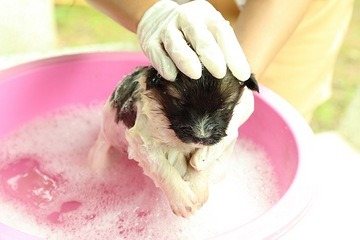
The choice of one option or another depends on the size of the animal and personal preferences. The water level should not be excessively high. It is enough for it to reach the knee joints or cover the paws.
Water temperature
The water should not be excessively hot or cold. The optimal temperature is considered to be within +35 °C. In this case, the puppy will feel comfortable and will not catch a cold.
Precautions: rubber mat on the bottom
In order for your pet to calmly endure the procedure and not be afraid, you need to lay a rubber mat on the bottom of the container. Thanks to this, it will be possible to prevent unwanted sliding, the animal will stand firmly on its paws.
Washing with an assistant
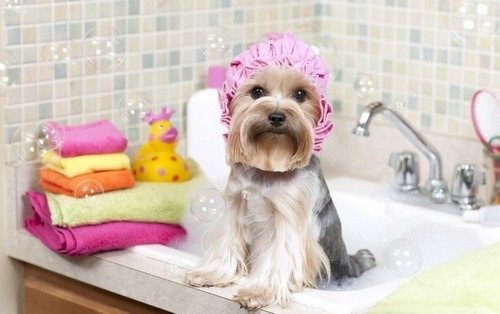
It is advisable to perform the procedure with an assistant. This is due to the fact that the puppy can break free and try to jump out of the basin or bathtub.
It is much easier to wash it with two people: while one person holds the dog, the other calmly wets, lathers and rinses the fur.
The importance of a positive attitude
While washing, you need to speak kindly to the animal and be as careful as possible. You should not make sudden movements.
It is extremely important that the atmosphere is calm. This is necessary so that the baby gets used to bathing and trusts his owner.
Procedure
You need to bathe a mongrel and a purebred puppy using the same technology. In this case, you should perform the following actions:

Taking your pet under its belly, immerse it in water.- Wait a little time for the animal to get used to the unusual sensations and get used to it.
- Pour a small amount of shampoo into your hand and apply it to the fur.
- While stroking, soap the dog.
- Rinse the animal. To do this, you need to fill a ladle with warm water and slowly water the animal. Shower use is also permitted.
- When all the shampoo has been washed off, remove the puppy from the water container and wrap it in a towel.
Why you shouldn’t wet your nose, ears and eyes
It is extremely important that water does not get into the puppy’s ears, otherwise the risk of developing ENT diseases increases. To avoid this, it is recommended to place cotton swabs in your ears.

It is also worth making sure that soapy water does not get into the eyes and nose: the delicate mucous membranes become irritated, and the dog begins to experience severe discomfort.
Because of this, your pet may experience panic. Water that gets into the nasal passages can cause the puppy to choke.
How to dry wool
To dry the animal, it is strictly forbidden to use a hair dryer. Hot air can burn delicate skin. The puppy just needs to be taken to a warm room and dried with a towel.
The main thing is not to overdo it so that the animal does not experience pain.
You need to make sure that there is no draft in the room. It is unacceptable for your pet to be cold, otherwise he may get sick.
Basic rules of water procedures
It is recommended to wash the puppy in the evening, after feeding and walking.
1. To avoid drafts, close the room door. Pour some warm water into the bath (about +36 °C). For bathing small breed babies, it is better to use a separate container - a basin or trough.
2. Comb your pet's fur thoroughly. Insert cotton swabs into the baby's ears. Place the dog in a container of water.
3. Gently and evenly wet the animal. Dilute the shampoo with water in a ratio of 1:4, whisk it and, starting from the withers, apply foam to the dog with massaging movements. Lastly, wash the neck and face. Do not pour water on your head, as this may cause liquid to get into your nose and ears.
4. Do not use detergents intended for human use. The ingredients found in “human” shampoos negatively affect the functioning of the dog’s sebaceous glands and cause allergic reactions, dandruff and itching. Perfume fragrance is also unlikely to be to the taste of your four-legged friend.
5. As a finishing touch, you can apply a softening balm to the wool. Then rinse the animal generously with running water several times. Dry your pet with a soft towel and remove the swabs from the ears. If you use a hair dryer, dry the coat in the direction it grows and avoid hot air. At the end of the procedures, comb the puppy thoroughly. After 3-4 days, treat it with parasite repellents.
Choosing detergents
The choice of washing products deserves special attention. Not all of them are suitable for bathing a small pet.
Special shampoos and conditioners
You need to wash the puppy with a special shampoo. A wide range of such detergents are available in pet stores. The choice of option directly depends on the type of fur of the animal.
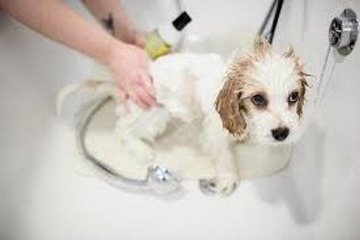
Products are available in two types:
- washable (shampoos and conditioners);
- leave-in (sprays and powder).
The second option is used to prevent the pet from smelling like a dog when it is not possible to give it a full bath.
Shampoos are recommended to be used in combination with conditioner to eliminate the static effect and moisturize the skin . This product helps restore the fat protective barrier.
Can it be used on people?
Using regular shampoo intended for people is strictly prohibited: it is not suitable for dogs due to its incompatibility with their fat layer.
Puppies cannot tolerate the strong smell of human products. In addition, pH levels differ significantly between humans and dogs. For human skin, a pH of 5.5 is considered normal, and for four-legged pets it is from 6 to 7.
Accordingly, their skin is more sensitive to the substances that make up the detergent, so the dog cannot be washed even with laundry soap.

When using conventional shampoos, the desired effect cannot be achieved. They have a negative effect on the functioning of the glands.
If you bathe too often, the situation will worsen: the coat will become dull and begin to fall out.
If remnants of human detergents enter the animal's digestive system, it can be poisoned. This is one of the main reasons why you should stop using regular shampoos.
Frequency of use of antiparasitic shampoos
Regular use of antiparasitic agents is strictly prohibited. They contain toxic substances that can negatively affect the condition of the pet’s coat and skin.
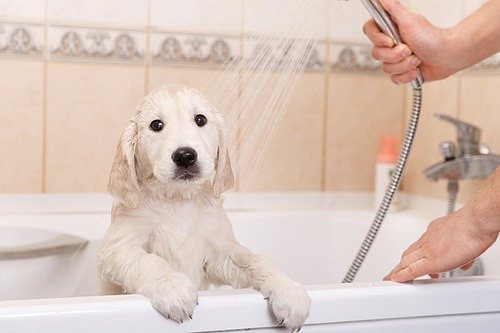
The use of flea shampoos should only be used in cases of parasite infestation. They are not used for preventive purposes.
Should you dry your dog?
After bathing, drying the coat is a must. First you need to give the dog the opportunity to shake himself off. You can then use a soft towel to massage the entire coat and dry it.
If the dog has long hair, especially when the house is cold, it is better to dry it with a hairdryer with cold air and not on full power.
If it's a small dog, you can wrap it in a blanket to keep it warm and relaxed.
Once the coat is dry, it is worth combing it. To make this process more enjoyable and easier, you can use specialized sprays and conditioners.
You can go for a walk with the dog only after 3-4 hours.
What to do if your puppy is afraid of water
Often dogs are afraid of water, and bathing becomes a troublesome task for the dog owner.
To accustom your puppy to water and achieve your goal, you need to follow these recommendations:
- Let your puppy know that the bathroom is safe. To this end, he should be encouraged in this room with treats, praise and petting.
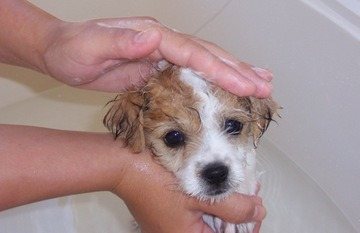
Get used to the bathroom itself. When the pet gets comfortable in its new room, it is placed in the bathtub, stroking and feeding it already there. When the baby calms down, you can try turning on the water while continuing to pet the animal.- Gently moisten the fur with warm water, and be sure to praise the puppy for its courage by giving another portion of treats.
If all your efforts are in vain, you can try to climb into the puppy’s bathtub yourself, thus showing that there is absolutely nothing wrong with this. When the owner appears nearby, the dog will begin to be interested in everything that is happening, relaxes and calms down.
In rare cases, a pet continues to be afraid of water. The dog breeder makes a lot of efforts to accustom the animal to washing, but to no avail. In this case, dry shampoo comes to the rescue.
It is applied to the wool and rubbed in. Then comb out the debris and dirt with a brush. This cleaning method is considered effective. It is often used for old, sick and show dogs.
How does the process work?
The puppy is lowered into the water in a quiet and calm environment, without unnecessary noise. Your pet may become nervous if he has never encountered water before. The key is to be patient and not take an aggressive approach. To stop your puppy from feeling stressed, you can gently pour warm water over his back.
When your pet calms down, you can gradually wet it with water. At the same time, they continue to stroke him. Then shampoo is applied to the body and foamed with gentle, massaging movements.
The animal's face is washed with a special clean dishcloth. After moistening it with warm water, gently wipe the puppy’s head. This should not be done if the baby is in an anxious state.
It is necessary to wash off the foam from the wool at least once so that its residue does not cause irritation on dry skin. You need to rinse your pet thoroughly until the foam completely disappears from the animal’s body.
After washing the puppy, dry it thoroughly with a towel so that no drops of water remain on the fur. If necessary, dry it with a hairdryer on low heat. In hot weather or in an unventilated area, the dog can be allowed to dry on its own.
If difficulties arise, you can ask your groomer how to properly bathe your puppy.
When swimming is prohibited
Swimming is prohibited during certain periods:
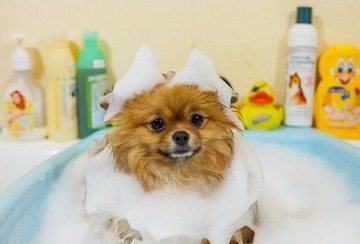
during the pet’s illness and for one and a half weeks after recovery;- for all kinds of skin diseases (eczema, dermatitis, lichen);
- skin damage;
- recent immunization - it takes at least a week to restore the body, and for this period it is extremely important to abandon water procedures.
Often, during the post-vaccination period, the animal’s temperature rises. This is considered a normal reaction of the body to the administered drug. In this case, any possible contact with water must be excluded.
Vaccination leads to a weakening of the immune system, so the puppy can catch a cold even after minor hypothermia.
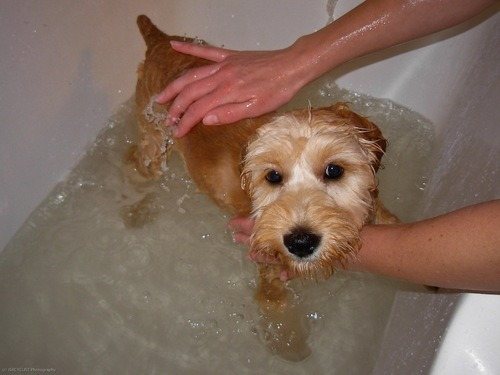
If an anti-rabies drug is administered, water procedures may be carried out at least after 14 days. This vaccine is quite difficult for animals to tolerate. Swimming can lead to health problems.
Bathing a month old German puppy
Is it possible to bathe a one-month-old German Shepherd puppy?
Answer
With the appearance of a four-legged pet in the house, it becomes necessary to acquire skills to care for a new family member. Hygiene is one of the important points of keeping a dog.
Experienced dog breeders and veterinarians advise not to bathe puppies until they are three months old. This is due to the structural features of the baby’s hair. Natural lubricant is easily washed off from the surface of the puppy's coat, protecting the puppy's coat and skin from adverse factors. At 3-4 months, the “baby coat” changes to adult hair. From this period, you need to accustom your pet to bathing.
The puppy's coat needs to be combed and brushed every day. For these purposes, you need to purchase a special comb and brush, and always have a clean cloth on hand. It should wring out well and absorb water and dirt. The daily care procedure is as follows:
- Wipe the paws with a damp cloth.
- Brush the puppy with a comb.
- Comb with a brush.
- Wipe the fur with a damp cloth in the direction of hair growth.
- If necessary, wipe the ears very carefully with a damp cloth.
If the puppy is very dirty, what should you do?
It happens that a little fidget gets so dirty that ordinary wet wiping does not help. Well, you will need to wash the puppy with water. To prevent your pet's paws from sliding on the smooth bottom of the bathtub, and to prevent the baby from being afraid of the first bath, you need to put a rubber mat on the bottom. It is better to purchase a special mat with suction cups. The water temperature should be about thirty-six degrees Celsius.
We must remember that the baby’s head is not washed, but wiped with a damp cloth. The ears should be covered with cotton swabs. It is important to ensure that water does not get into your ears under any circumstances. This can provoke the development of ear diseases in the puppy. If the dirt is very strong, you can use a special shampoo. Pet stores sell a variety of dog shampoos. There is also one for puppies. Do not overdo it with shampoo - in large quantities it is poorly washed out of the thick undercoat. Chemical residues can make your puppy's skin itchy.
It is very important to ensure that there are no drafts. Otherwise, the baby will easily catch a cold. The thick undercoat takes a long time to dry, so you should thoroughly dry your pet with a towel and keep it warm until completely dry. You should not walk on this day.
Remember that frequent bathing is not recommended even for adult dogs. With frequent water procedures, the protective lubricant does not have time to be restored, which leads to skin diseases and poor appearance of the coat. Bathing your puppy before his coat changes should be the exception, not the rule. If your pet is a big troublemaker, then it is important to carefully ensure that the puppy does not accidentally get very dirty.
Preparing for your first swim
To make the bathing procedure easy and stress-free, use the following tips.
Before the procedure, prepare everything you need:

You should be especially careful when purchasing shampoo. For sensitive and delicate skin of puppies, you need to choose products with a delicate composition. For example, “Gentle” pet shampoo with aloe vera, lanolin and chitosan (natural conditioner). It foams well, helps prevent excessive degreasing of the skin and dandruff, and makes the coat shiny.
For animals with long, thick hair, you will also need a conditioner or balm, preferably from the same series as the shampoo. Read the instructions carefully and choose products that suit your pet's coat type.
Remember that shampoo should not be used unless absolutely necessary. The puppy's skin and coat are protected by natural lubrication produced by the skin glands. Excessively frequent washing can provoke increased secretion of lubricant, accompanied by a sharper and more unpleasant odor from the dog. When bathing with water without detergents, the skin's natural protection is not impaired.
When the puppy needs your intervention
Young dogs are still clumsy and do not always know how to eat food carefully. They also tend to get dirty during play. In turn, puppies, who can already go outside, begin to experience all the delights of lawns, meadows and forests - after returning from such walks, they usually look completely different than before going outside.
At such moments, our help is needed - washing the mouth, paws, abdomen or anus after defecation.
In many cases, the pet cannot cope with the problem on its own. If we don't help him, food that dries on his mouth or feces around his anus will cause him pain and discomfort.
Additionally, many dog breeds have a problem with excessive secretion from the conjunctival sacs. Such discharge should be washed and removed regularly. If we don't do this, it will start to dry out and create painful burns.
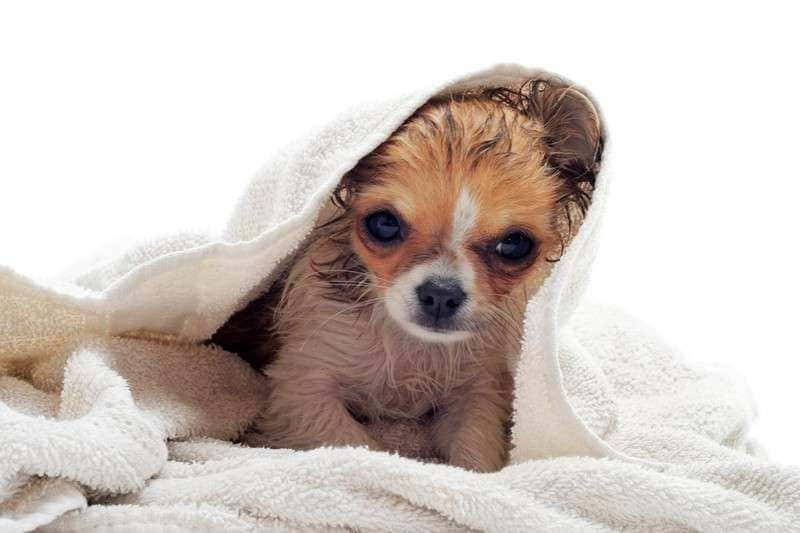
Short-haired dogs, on the other hand, require regular and thorough cleaning of the folds of the mouth, and often the neck and tail, to prevent inflammation from developing.
When not to: 7 basic prohibitions
It is not recommended to wash puppies until they start going outside. The first bathing is allowed from the age of 3.5 - 4 months, when quarantine ends after vaccinations.
Babies up to 1-2 months old are washed by their mother. When puppies arrive at their new owner's home, they only need to wipe their paws, face, and area around the genitals.
If the kitten gets dirty with something, washing is allowed. After the procedure, the baby must be thoroughly dried with a towel, and then wrapped and kept under a blanket until he is completely dry.
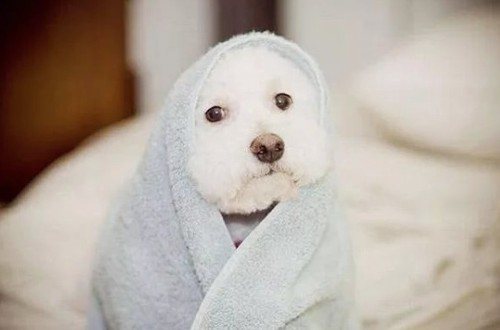
You can't wash dogs:
You can bathe a pregnant dog if she is not afraid and easily tolerates the procedure. The same applies to lactating bitches. Otherwise, it is better to stop at wiping and combing.
Step-by-step instruction
Dogs are washed approximately once a month using shampoo and other detergents. But look at how dirty it is. If the animal has gotten very dirty before or smells bad, then you can bathe it several times a month.
How to take a bath
If the dog is very dirty and there is no other option other than your bath, wash your pet according to the instructions.
To prevent your dog from slipping after bathing on the tiles, cover the bathroom floor with old sheets or large towels.
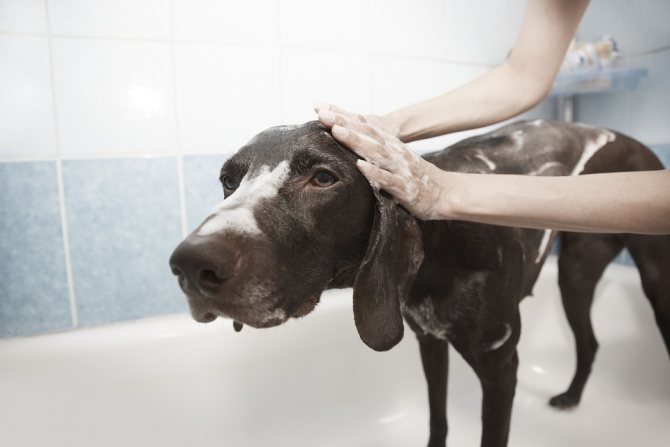
Shower rules
The shower stall is more suitable for washing small dogs, but large dogs can also be carefully bathed with a watering can.
Use the shower more often in the summer. In winter, this procedure is dangerous: it is easier to catch a cold under the stream.
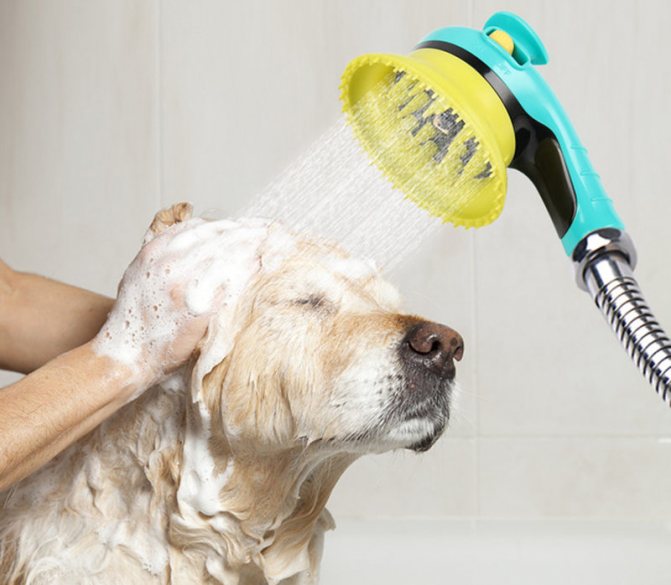
How to bathe small breeds
Small dogs can be bathed in a basin or sink. The procedure is standard for all breeds, but small pets have to be washed more often. During walks, they collect more dirt on their fur due to their short stature.
Be sure to keep an eye on your animal’s ears during hygiene procedures. In small dogs they are usually large, making it easier for water to get into the ear canals. Plug them with cotton balls, inspect and wipe them after the bath.

Always calm your dog before, during and after bathing. Small breeds are especially nervous and need reassurance.
Small breeds of dogs are more prone to colds and infections, so it is not advisable to frequently wash the entire body with shampoos. But the paws and anus can be cleaned every day or several times a week.
Washing a dog in 3 stages
Washing your pet at home consists of 3 parts: preparatory, actual bathing and final procedures. Each of them has features and nuances that you need to know.
Preparation
Before bathing, the room and pet must be prepared.
Preliminary:
You can put a muzzle (preferably nylon) and a leash on the dog - the first is especially necessary for biting pets, and the second is tied to prevent escape from the bathroom.
I recommend: How to stop a puppy from biting
Process
Large dogs are bathed in a bathtub, and small dogs are bathed in a basin or baby bath. Tiny dogs such as Pomeranians, Chihuahuas or Yorkies may be intimidated by a large container.
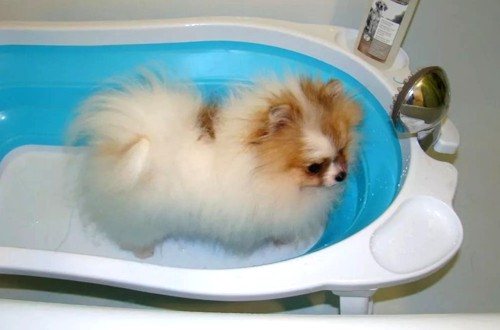
Otherwise, the sequence of actions for properly washing a dog is no different:
When bathing, the dog's head is slightly raised to prevent water and foam from getting into the eyes, mouth and ears. It is necessary to encourage your pet, calm him down, and praise him.
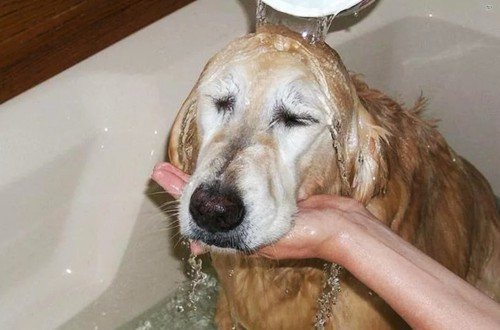
Some dogs, especially those not accustomed to bathing procedures, are afraid to wash themselves. The main thing is to act carefully. The affection will help you adapt. Under no circumstances should you shout, even if the pet bit in a fit of fear or tried to get out of the bath.
After the bath
When the last drop of shampoo is washed off, you need to:
It is better to wait until the fur coat dries itself. All this time you need to make sure that the dog does not end up in a draft.
If necessary, you can use a hairdryer. The mode chosen is gentle, with slightly warm air.
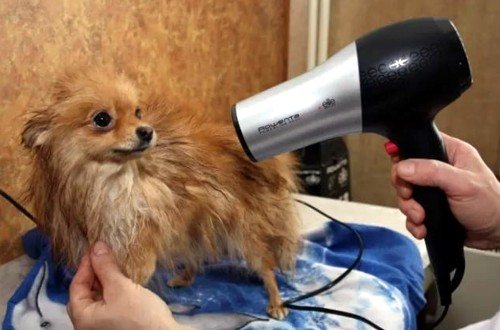
After leaving the bathroom, many dogs begin to run around the apartment like crazy, rubbing against furniture and carpets. There is no need to interfere - this way they warm up and stretch their joints.
You cannot take your dog outside immediately after bathing, even if he is already dry. You need to wait a couple more hours, otherwise your pet may catch a cold.


